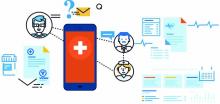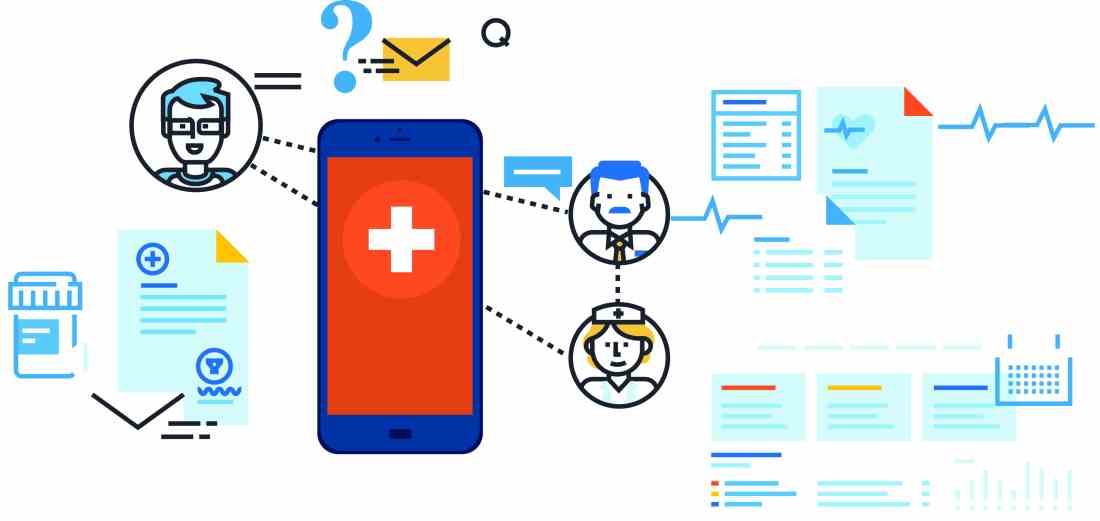User login
Hospitalists should not overlook apps as tools for better health: Smartphone ownership is rising among all demographic groups, and more than 165,000 health apps exist in app stores. Many apps are aimed at helping caregivers and patients with complex medical conditions.
“Patient-facing mobile health applications (mHealth apps) – those intended for use by patients to manage their health – have the potential to help high-need, high-cost populations manage their health, but a variety of questions related to their utility and function have not previously been explored,” Karandeep Singh, MD, MMSc, said in “Many Mobile Health Apps Target High-Need, High-Cost Populations, But Gaps Remain.”1
- How well do apps serve the needs of patients with varying levels of engagement with their health?
- Can we infer an app’s clinical utility or usability based on its app store rating?
- Do apps appropriately respond to information entered by the user indicating that he or she might be in danger?
- How well do apps protect the privacy and security of user-entered health data?
- Are app costs a barrier to patients’ purchasing and using them?
- The study team found a variety of apps for patients with chronic conditions.
“While many apps allow users to track health information, most apps did not respond appropriately when a user entered potentially dangerous health information,” Dr. Singh says. “Consumers’ ratings of apps on the iOS and Android app stores were poor indications of the apps’ clinical utility or usability. Finally, we found that many apps enable sharing of information with others but primarily through insecure means. This is especially problematic because just under two-thirds of apps we evaluated had a privacy policy.”
He cautions hospitalists that app ratings may have little bearing on its clinical utility as judged by a physician.
“Additionally, for patients tracking health findings using apps during an inpatient stay, the most secure way of sharing this information is the old-fashioned way, in person or in print,” he explains. “Unlike hospital-based health information systems, health data stored in apps is generally not regulated by HIPAA. Hospitalists should not assume that a ‘secure messaging’ system provided by a patient-facing app is actually secure.”
The American Medical Association, American Heart Association, Healthcare Information and Management Systems Society, and digital health nonprofit DHX Group are the founders of the new guideline-writing organization called Xcertia. Xcertia will provide guidance for developing, evaluating, or recommending mHealth apps.
“I hope that hospitalists keenly interested in apps will take an active role in Xcertia, to ensure that their voices are heard in what looks to be an unprecedented large-scale effort in the United States,” Dr. Singh says. “While a medication list printed on a discharge summary cannot remind patients to take their meds, apps can do this quite well.”
Reference
1. Singh, K, Drouin, K, Newmark, L, et al. Many mobile health apps target high-need, high-cost populations, but gaps remain. Health Affairs. 2016;35(12):2310-8.
Hospitalists should not overlook apps as tools for better health: Smartphone ownership is rising among all demographic groups, and more than 165,000 health apps exist in app stores. Many apps are aimed at helping caregivers and patients with complex medical conditions.
“Patient-facing mobile health applications (mHealth apps) – those intended for use by patients to manage their health – have the potential to help high-need, high-cost populations manage their health, but a variety of questions related to their utility and function have not previously been explored,” Karandeep Singh, MD, MMSc, said in “Many Mobile Health Apps Target High-Need, High-Cost Populations, But Gaps Remain.”1
- How well do apps serve the needs of patients with varying levels of engagement with their health?
- Can we infer an app’s clinical utility or usability based on its app store rating?
- Do apps appropriately respond to information entered by the user indicating that he or she might be in danger?
- How well do apps protect the privacy and security of user-entered health data?
- Are app costs a barrier to patients’ purchasing and using them?
- The study team found a variety of apps for patients with chronic conditions.
“While many apps allow users to track health information, most apps did not respond appropriately when a user entered potentially dangerous health information,” Dr. Singh says. “Consumers’ ratings of apps on the iOS and Android app stores were poor indications of the apps’ clinical utility or usability. Finally, we found that many apps enable sharing of information with others but primarily through insecure means. This is especially problematic because just under two-thirds of apps we evaluated had a privacy policy.”
He cautions hospitalists that app ratings may have little bearing on its clinical utility as judged by a physician.
“Additionally, for patients tracking health findings using apps during an inpatient stay, the most secure way of sharing this information is the old-fashioned way, in person or in print,” he explains. “Unlike hospital-based health information systems, health data stored in apps is generally not regulated by HIPAA. Hospitalists should not assume that a ‘secure messaging’ system provided by a patient-facing app is actually secure.”
The American Medical Association, American Heart Association, Healthcare Information and Management Systems Society, and digital health nonprofit DHX Group are the founders of the new guideline-writing organization called Xcertia. Xcertia will provide guidance for developing, evaluating, or recommending mHealth apps.
“I hope that hospitalists keenly interested in apps will take an active role in Xcertia, to ensure that their voices are heard in what looks to be an unprecedented large-scale effort in the United States,” Dr. Singh says. “While a medication list printed on a discharge summary cannot remind patients to take their meds, apps can do this quite well.”
Reference
1. Singh, K, Drouin, K, Newmark, L, et al. Many mobile health apps target high-need, high-cost populations, but gaps remain. Health Affairs. 2016;35(12):2310-8.
Hospitalists should not overlook apps as tools for better health: Smartphone ownership is rising among all demographic groups, and more than 165,000 health apps exist in app stores. Many apps are aimed at helping caregivers and patients with complex medical conditions.
“Patient-facing mobile health applications (mHealth apps) – those intended for use by patients to manage their health – have the potential to help high-need, high-cost populations manage their health, but a variety of questions related to their utility and function have not previously been explored,” Karandeep Singh, MD, MMSc, said in “Many Mobile Health Apps Target High-Need, High-Cost Populations, But Gaps Remain.”1
- How well do apps serve the needs of patients with varying levels of engagement with their health?
- Can we infer an app’s clinical utility or usability based on its app store rating?
- Do apps appropriately respond to information entered by the user indicating that he or she might be in danger?
- How well do apps protect the privacy and security of user-entered health data?
- Are app costs a barrier to patients’ purchasing and using them?
- The study team found a variety of apps for patients with chronic conditions.
“While many apps allow users to track health information, most apps did not respond appropriately when a user entered potentially dangerous health information,” Dr. Singh says. “Consumers’ ratings of apps on the iOS and Android app stores were poor indications of the apps’ clinical utility or usability. Finally, we found that many apps enable sharing of information with others but primarily through insecure means. This is especially problematic because just under two-thirds of apps we evaluated had a privacy policy.”
He cautions hospitalists that app ratings may have little bearing on its clinical utility as judged by a physician.
“Additionally, for patients tracking health findings using apps during an inpatient stay, the most secure way of sharing this information is the old-fashioned way, in person or in print,” he explains. “Unlike hospital-based health information systems, health data stored in apps is generally not regulated by HIPAA. Hospitalists should not assume that a ‘secure messaging’ system provided by a patient-facing app is actually secure.”
The American Medical Association, American Heart Association, Healthcare Information and Management Systems Society, and digital health nonprofit DHX Group are the founders of the new guideline-writing organization called Xcertia. Xcertia will provide guidance for developing, evaluating, or recommending mHealth apps.
“I hope that hospitalists keenly interested in apps will take an active role in Xcertia, to ensure that their voices are heard in what looks to be an unprecedented large-scale effort in the United States,” Dr. Singh says. “While a medication list printed on a discharge summary cannot remind patients to take their meds, apps can do this quite well.”
Reference
1. Singh, K, Drouin, K, Newmark, L, et al. Many mobile health apps target high-need, high-cost populations, but gaps remain. Health Affairs. 2016;35(12):2310-8.

